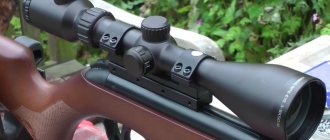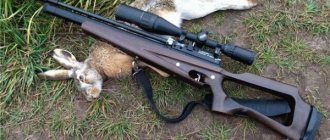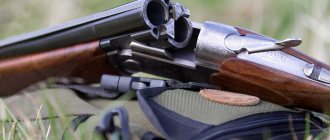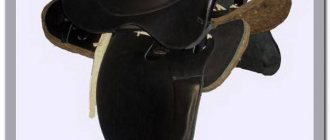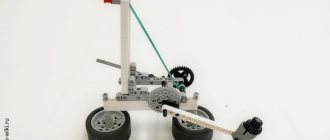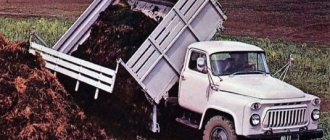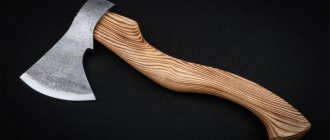The sighting bar of the gun, together with the front sight, is the main sighting device on a hunting rifle. There are guns that have no sights at all.
It is inconvenient for even the most experienced hunters to hunt with such guns, since they experience some discomfort while aiming.
By its nature, the aiming rib of a gun can be narrow or wide. For example, a width of 6-7 mm gives reason to consider it narrow, but 9.5 - 12 mm is already a wide bar.
Is it better wide or narrow? Here everything depends on preferences, but still, for sporting purposes, guns with wide slats are more often produced. They have a groove in the middle, the so-called depression, which runs along the entire length.
Almost all horizontal sights have a narrowing rib, that is, at first it is widest, and then as it moves towards the muzzle it narrows.
This design is even found in some shotguns with vertical barrels, but generally they have the same rib width in all sections of the barrel.
Types of seats
Before you start selecting a bracket, you need to answer two questions - what the bracket will be installed on and the type of sight. To answer the first one, just look at your gun and determine the type of seat. Weapon manufacturers use different types, we have collected all types and will tell you about them in detail.
Main types of weapon mountings:
| Dovetail | Weaver Picatinny | Side mount | Ventilated strip |
Dovetail mount
The dovetail fastening is one of the first and still exists today. The fastening in the cut is an equilateral trapezoid, which resembles the tail of a swallow, which is why it got its name. A similar connection can be found in many fields, for example, in carpentry or mechanical engineering. The width of the dovetail on guns varies from 6 to 19 mm. The dovetail on guns may have some features, for example:
- Round
or
straight
base
| Almost all monoblock brackets and rings are available for a straight base. This is the main type of dovetail. | The rounded dovetail base is less common, mostly found on air rifles. When installing, you need to select brackets with the appropriate shape. |
When choosing a dovetail bracket, pay attention to the surface of the plank. Brackets that are not installed on their base do not provide a correct fit, which will certainly affect stability.
- Longitudinal
or
split
base
The base can have a longitudinal or separate profile. Often between two seats there is a recess with a mechanism for removing sleeves.
| Longitudinal base of a Stoeger rifle | CZ-550 rifle split base |
With a longitudinal base, it is possible to install any dovetail brackets of the appropriate width.
With a separate base, brackets or rings are used with a certain width between the drains and height, which do not interfere with the flight of the sleeves. Often in such cases, separate rings or turning bulls are installed.
Weaver and Picatinny mount
Weaver and Picatinny mounts are a 21mm wide rail. A distinctive feature is the presence of transverse slots for bracket stops. The cut of the plank is a rectangle with beveled corners:
Visually, Weaver and Picatinny mounts are similar, the differences lie in the width of the slot and sometimes in the pitch:
Weaver and Picatinny rails have tolerance standards, so in practice it is not worth asserting the accuracy of the values presented in the diagram above. The main rule when selecting fastenings for these strips is:
- Weaver mounts can be installed on Picatinny and Weaver rails.
- Picatinny mounts cannot be installed on Weaver rails.
Side mount
On domestically produced carbines, created on the basis of AK, in most cases, side rails are installed. If you look at the cut, you will notice a similarity with the dovetail fastening, but due to a number of features, the fastening has its own name. Firstly, as the name implies, the bar is located on the side, which means it has a different principle for installing brackets. Secondly, depending on the type of weapon, the bracket stopper and technological recesses are located in a special way on the side bar.
In the optical field, the terms “side mount” and “side bar” have become established. If we are talking about a “dovetail”, then a seat is assumed to be located on the top of the receiver.
The width of the side bar may vary and, depending on the carabiner, ranges from 11 to 15 mm. The bracket is selected for a specific gun, since the width, mounting height of the bracket and the location of the stopper are important. Below is an example of the location of the stopper for Saiga and Tiger:
Ventilated strip
Another type of seat is a ventilated strip. It is worth immediately noting that this method has a limitation on the weight of the installed optical device. The Combat store recommends installing only light collimator sights on the ventilated rail, otherwise the rail may tear off the gun when fired.
| The ventilated bar is designed to remove excess heat when the barrel is heated, therefore, in most cases, it is equipped with transverse holes. There are adapter brackets that create Weaver or “dovetail” seats on a ventilated rail due to these holes, and subsequently red dot sights are installed on them. The width of the ventilated strip varies from 6 to 13 mm. Some brands produce collimators that are mounted under a ventilated bar, so there is no need to use an adapter. The ventilated strap, especially on foreign guns, often acts as a decorative element, so you can find the following shapes of holes: rectangular with rounded corners, oval, triangular and others. This must be taken into account during installation. To select an adapter for a ventilated strip, you need to know the width and height of the strip, the width and height of the holes, and the distance between the holes. Using the diagrams on our website you can easily select an adapter. |
High or low aiming bar, which is better?
definitely high is better, Belmonte has low
TFS, definitely uncomfortable.
hmm, what is the discomfort expressed in?
Guf87, hello, by the way, I held the Affinity and Belmonte, with the Affinity it seemed that the center of gravity on the fore-end and holding it on outstretched arms for a long time was somehow more stressful. But Belmonte seems to suit me better
TFS, it’s better to take francs with a high bar, better than Belmonte
Guf87, I agree, I switched from Belmonte to Benelli Vinci, the first season was bad as hell, I already thought that I had bought a gun, but no, it was all about the bar, I went for a ride on the stand, took aim and everything was ok
If your muzzle is wide, you'll beat off your cheek
BMP-1, normal muzzle) That is, if you switch from MC to Belmonte, you should not aim with the front sight level with the bar, but see the open bar?
TFS, If it’s level as on the MC, if the current front sight is visible, then usually foreign cars are lowered. I shoot with an open bar, just like I threw it up and shoot
high-low is one thing, open-closed is another. no need to be confused.
I bought Frankie Affinity One, with a high bar.
TFS, too, when choosing Belmonte and Affinity One, but I am more inclined to Belmonte. What are the advantages of Affinity?
Prol, at Belmonte you can’t increase the magazine, but at Affinity you can
TFS Where did you get it and for how much if it’s not a secret?
Nizhny Bestyakh 64,000
the high bar grows with ears from the stock.
Source
Features of fastenings
In this section we will look at what features brackets have when installing different types of optical devices.
Using Weaver and Picatinny rails
One of the most common ways to install day, night and thermal imaging sights is through Weaver and Picatinny rails. This type of fastening is considered universal, as it allows you to use one base for several types of devices. Most red dot sights, under-barrel lights and accessories are manufactured with an integrated Weaver mount.
Advantages of Weaver/Picatinny compared to dovetail mount:
- The dovetail mount, due to the stop, requires mounting the brackets in only one position, and the slots on the Weaver rail allow the brackets and sights to be installed in any position, making it easier to maintain a comfortable and safe distance from the eye.
- The Weaver is wider than a standard dovetail, so there is a wider contact area - when installed correctly, Weaver brackets are less susceptible to failure.
The Weaver/Picatinny mount looks like this:
- Reasons for creating a seat, for example:
| Weaver plank on Franchi Horizon | Weaver bracket on Blaser |
- Transition brackets from other types of seats, for example:
| Weaver dovetail bracket CZ452 | Weaver bracket for ventilated strip IZH-27 |
Selecting the height of the scope rings
Daytime optical sights are installed through mounting rings that differ in height. Bracket manufacturers indicate the height in their names in several ways, for example:
| L1 – height from the bottom of the seat to the optical axis (middle of the ring) L2 – height from the top plane of the seat to the bottom of the ring L3 – total ring height D – sight mounting diameter D1 – overall lens diameter H – distance from the bottom of the sight to the gun* |
* - to the barrel of the gun or to the extreme point, for example, to the mechanical sight or landing strip.
The variety of ring heights is due to the difference in the diameters of the sight lenses. If the ring is too low, then the sight simply will not fit on the weapon, but placing the sight too high is not always convenient. The diameter of the lens is measured by the external dimensions of the sight, taking into account the focusing ring and protective cover, if any.
For optimal placement, the H value must be greater than zero, otherwise the sight simply will not fit on the weapon:
0 < H = L1 – D1/2
0 < H = D/2 +L2
The nuances of installing side brackets
The popularity of side brackets is associated with the widespread use of AK family weapons in Russia with appropriate mounting. The brackets are very easy to install, the connection is strong, and when reinstalled, depending on the quality of production, the alignment data is retained. Due to the proliferation of weapon subtypes, the structural location of the rail relative to the receiver may differ significantly. The main differences are height and distance relative to the eye. The most common types are brackets:
- on the “Tiger” - low profile (the side rail is located high), greater distance towards the barrel of the gun, in some cases suitable for versions of the Simonov carbine;
- on the “Saiga” - a high profile (the side bar is low), mainly moving towards the shooter’s eye, suitable for some varieties of “Vepr”.
To solve the problem of installing a side mount, you can use two options - install one bracket designed for a specific type of sight, or use an adapter bracket for Weaver.
Below are the pros and cons of the two mounting options:
| Via Weaver adapter brackets | Through brackets for rings or prisms |
| universal mounting due to the ability to install different types of devices under a single Weaver base | individuality of fastening for a specific type of device, which leads to a low cost of the kit |
| the total number of brackets for installing a specific device increases, which affects the cost of the kit | limited number of options for selecting a bracket for a specific scope |
| the ability to set a certain distance to the shooter’s eye due to the presence of transverse slits | the location of the sight relative to the shooter's eye is limited by the bracket |
Europrism mount
To install night vision sights and thermal imagers, a “Europrism” mount is often used, which is also called an LM prism or LM bus. The peculiarity of this type is the ability to create an individual bracket for a specific gun. The standard Europrism has the following form:
The upper part of the Europrism is a reciprocal part for the base of the sight, the lower part is a trapezoid.
| The difficulty of installing this mount lies in the additional drilling of the Europrism for the transverse tightening screws. This procedure is carried out in professional weapons workshops. As a result, during installation, eye relief is selected individually for the shooter. |
Quick release brackets
As the name suggests, quick release brackets can be quickly installed or removed. This is due to the types of clamping screws or design features that imply fixation without the use of auxiliary tools. This is achieved in the following ways:
Using a pinch screw with a lever instead of a hex cap screw. The lever can move both around the screw axis and in the plane, moving the eccentric. Using the Luman Precision rings as an example, you can see the presence of levers. The lever arm results in increased force, which promotes a secure connection. In Leapers rings, an eccentric is installed at the end of the tension screw, and a lever moves the pressure plate.
| Luman Precision Quick Release Rings | Leapers Quick Release Rings |
A separate type of quick-release fastener is the swivel brackets. This type simultaneously provides quick installation, accuracy and a unique design, but at the same time has a higher cost. For rotating brackets, it is necessary to install special bases on the weapon mounting, and the mating part is installed on a certain type of sight. At the moment, there are many manufacturers of swivel brackets, such as MAK, Apel, Kozap, who have developed their own mechanism for fixing the upper part, so when purchasing a kit, it is worth using brackets from the same brand.
| Swivel bracket MAK with rotating washer for Sako | Kozap swivel bracket with clamping screw under CZ |
Some side brackets also have a lever clamp:
| Dedal Quick Release Side Bracket | VOMZ quick-release bracket |
Quick-release brackets are convenient to use if there is a direct need for it, for example, during hunting, when day optics are replaced by night optics. And in high-precision shooting, professionals often use non-quick-release brackets due to stronger fixation and precise angle of inclination.
Specialized tires for sights
It is worth highlighting specialized tires for sights from brands such as Carl Zeiss and Swarovski and Burris. Some models of these brands are equipped with a specific type of fastening.
The Swarovski tire refers to the body of the sight, which has a T-track at the bottom with teeth on the tips. The reciprocal part of the bracket is equipped with corresponding sliders and a gear rack for additional fixation:
The Zeiss tire is a little simpler than the Swarovski and has a V-shaped track (prism) in its profile:
Swarovski and Zeiss tires have a very specific fastening. As shown in the diagrams above, both types are not interchangeable and require specialized brackets. Due to the integrated seat on the sight, the mount is highly durable, and the longitudinal shape of the tracks allows you to accurately set the optimal position of the sight relative to the eye.
General characteristics of fasteners
Weaver and Picatinny rails have a number of common characteristics:
- Carbon steel with a protective coating (blued) that prevents corrosion is used for manufacturing;
- the side edges of the planks are set at an angle of 45°.
Since there are differences between the rails, accessories for the Weaver system are compatible with Picatinny rails, but the rule does not apply in the reverse order. There are military sights that are mounted only on a NATO standard rail. Some craftsmen modify the design by removing some of the metal or installing additional gaskets.
To ensure accurate aiming, the weapon must be zeroed.
Overview of the main bracket manufacturers
Domestic brackets
| ECT Tula Research and Production produces a huge range of brackets for domestic shotguns:
More information about the EST model range |
| Rose of Wind Volzhsky produces all-milled side brackets for AK family shotguns and Weaver steel rails for Czech and Italian shotguns. Due to the use of durable materials, the cost of the brackets is not small, but when compared with foreign analogues, it is significantly cheaper. Windrose brackets are professional solutions for installing night and thermal imaging sights with a unique clamping system.
Read more about the “Wind Rose” model range |
| VOMZ The Vologda Optical-Mechanical Plant produces a number of brackets for installing its sights. VOMZ brackets have a budget price, which is why they have gained popularity among hunters. Separately, there is a series of side brackets with a top part for Weaver or rings.
More information about the VOMZ model range |
German brackets
| Kilic Feintechnik (MAK) The Kilic Feintechnik company is one of the leaders in the number of products produced in the field of weapon mounts. German brackets under the MAK brand are distributed throughout the world. The company's products allow you to solve any problems related to the installation of day, night and thermal imaging sights. Many optical manufacturers cooperate with this company and produce specialized kits.
More information about the MAK model range |
| Recknagel The German company Recknagel has a wide range of products from simple rings for hunting rifles to balanced and adjustable monoblocks for tactical applications. The patented ERA TAC series has proven itself to special forces as a durable and reliable fastener.
Read more about the Recknagel range |
| Apel One of the most popular quick-release fastening systems is produced by the German company Apel. The company is considered one of the oldest in the fastening manufacturing market and has gained its fans over the years. Our own system of rotary mounts, high quality workmanship, specialized rails and brackets for certain brands of sights.
Read more about the Apel lineup |
Italian brackets
| Contessa Alessandro When it comes to installing mounts on sophisticated types of weapons, then hunting enthusiasts choose Italian Contessa mounts. The company develops high-strength adapter strips and brackets for all types of foreign guns.
Read more about the Contessa range |
American brackets
| Leapers The Leapers company occupies a high position in America in the sale of weapons tuning products. The model range includes rings, monoblocks, brackets for handguards and quick-release fasteners. Due to the presence of our own factory in China, the cost of products will please every hunter. In our store you will find all Leapers mounts, including the Accushot series quick-release rings and side brackets for the AK family.
Read more about the Leapers lineup |
| Leupold One of the most recognizable American manufacturers of optical sights, Leupold, offers various options for steel and aluminum rings. Leupold has its own designs of quick-release and swivel brackets for foreign shotguns.
Read more about the Leupold lineup |
| NightForce NightForce produces sights for tactical tasks and competitions, and as an addition offers its own brackets that provide high installation strength. Basically, NightForce mounts are seating rings with different mounting heights.
More information about the NightForce lineup |
Czech brackets
| Kozap Kozap is a private company in the Czech Republic that produces mounts primarily for Czech rifles. The assortment includes separate and monoblock rings, quick-release rotary kits and landing strips. Kozap brackets are affordable in price compared to analogues, while being quite durable due to the use of steel as a material.
Read more about the Kozap lineup |
Swedish brackets
| Spuhr Swedish Spuhr brackets are a separate branch in the fastening market. The company specializes in accessories for precision shooting. The brackets have high precision, a certain degree of inclination and levels. If the task is to place a bullet in the center of a target at a long distance, then professionals choose Spuhr quality.
Read more about the Spuhr lineup |
High or low aiming bar, which is better?
PSS/ it is very difficult to choose a benelka with such minor differences and a huge range of models..
I have a Snipe 660 mm, from the receipt the scree is perfect (defined edges, uniform, as in the picture in the “okhotminimum”).
The guns have 710mm of turning and better balance.
With the same roll (for the purity of the experiment), the difference is unnoticeable.
All that remains is to choose the barrel length. 101tr for a short one in camo or 94 for a long black one + additional magazine. which is not really needed.
or for 91 take the “time-tested” M2 in camo
or for 91 take the “time-tested” M2 in camo ======================================= ===================================================== I also have the agonies of choice, the only serious drawback of the M-2 is the bolt sticking in the rear position when shooting, there are already about a dozen people, and this problem appears regardless of the shot, there is even a separate topic on this in the Benelli club! What’s interesting Sticking of the shutter appeared only on one model of all Benellis - the M-2, this was not noticed on any others! And the M2 is a good workhorse, time-tested! Vinci is a new product, the ability to easily install a collimator on the weaver rail, since there are already holes in the lid of the box, it’s easy to change magazines, and the materials of the stock are newer and of better quality, interesting design, so I think it’s worth considering Vinci as a purchase, although for some the design is not like it, as you please. I’ll also say that I read reviews on a foreign site, Americans also choose between Vinci Camo and M-2 or Cordoba, since they have everything available and reasonable prices of 1200-1300 bucks Vinci, then they take two Benellis so as not to suffer!
Source

